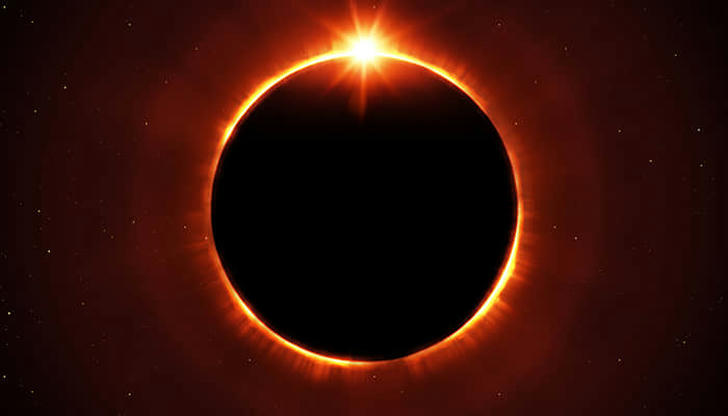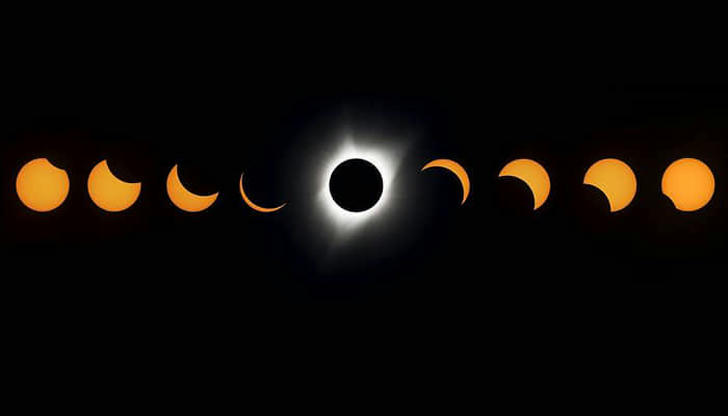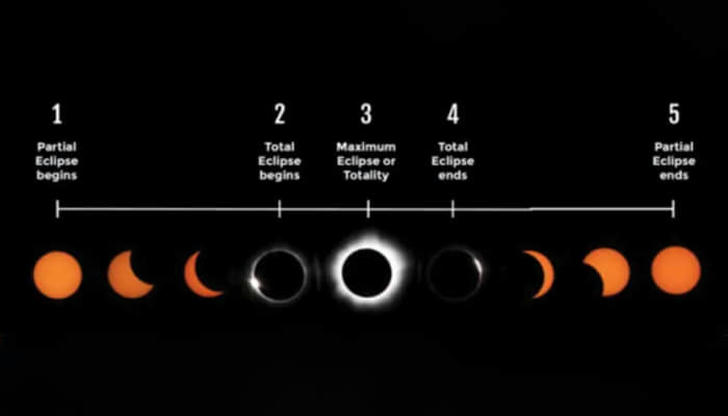Total Solar Eclipse Visible in the United States on April 8, 2024 is Coming. Learn More About It.

The 2024 solar eclipse is an astronomical event that captivates both scientists and enthusiasts alike. As we delve into the details of this extraordinary phenomenon, let's explore what a total solar eclipse entails, what happens during totality, and crucial information about the timing, duration, visibility, and safety measures for witnessing this awe-inspiring event.

What is a total solar eclipse?
A total solar eclipse occurs when the moon passes between the Earth and the sun, completely obscuring the sun's disk from view. This celestial alignment casts a shadow on Earth, creating a temporary darkness known as totality in the eclipse's path.
Compared to annular and partial solar eclipses, total solar eclipses are relatively rare celestial events, drawing many people outdoors to witness them. The upcoming total solar eclipse on April 8, 2024, marks the only occurrence of this phenomenon globally for the year and the first visible total solar eclipse from the contiguous United States since 2017.
What happens during totality?
During totality, the sky darkens to twilight, and the sun's corona, the outer atmosphere, becomes visible. Bright stars and planets may also emerge, and animals may exhibit unusual behaviors, responding to the sudden darkness.
What time is the solar eclipse on April 8, 2024?
The eclipse will begin in Texas at 1:27 p.m. CDT and end in Maine at 3:35 p.m. EDT, but the exact time of the eclipse varies by where you are in its path.
How long will the April 8, 2024 eclipse last?
The duration of the eclipse depends on several factors, including geographic location and the path of totality. On April 8, 2024, the totality will only last about four minutes, providing a brief yet mesmerizing spectacle for observers.
Where will the 2024 solar eclipse be visible?
The path of totality for the 2024 solar eclipse will traverse parts of North America, including Mexico, the United States, and Canada. Major cities such as Dallas, Indianapolis, Cleveland, Buffalo, and Montreal will fall within the path.

Many towns along the path of the solar eclipse are gearing up for weekend activities and observation parties to attract tourists. From museums to parks and even wineries, a variety of celebratory events are in the works, ready to make the most of this special day.
What are the 5 stages of a total solar eclipse?
• Partial Eclipse Begins: This is the initial phase where the moon starts to move in front of the sun, gradually covering a portion of its disk. At this stage, the sun appears to have a "bite" taken out of it.
• Total Eclipse Begins: The moment when the moon completely covers the sun's disk, leading to the onset of totality. This marks the beginning of the most dramatic phase of the eclipse.
• Totality: This is the highlight of the eclipse when the moon fully obscures the sun, casting a shadow on the Earth and plunging the surrounding area into darkness. The sun's corona becomes visible, creating a breathtaking sight. If the Sun’s solar activity is strong, the corona will blast out from all sides of the Moon. If it is weak, it will follow the direction of the Sun’s magnetic path.
• Total Eclipse Ends: The phase where the sun starts to re-emerge from behind the moon, signaling the end of totality. This marks the transition back to a partial eclipse.
• Partial Eclipse Ends: The final stage where the moon moves away from the sun, gradually revealing its full disk. This phase concludes when the moon is no longer covering any part of the sun's surface, signaling the end of the eclipse.
How to see the 2024 solar eclipse safely?
Viewing a solar eclipse requires special precautions to protect your eyes from the sun's harmful rays. Never look directly at the sun without proper eye protection, such as certified solar viewing glasses or solar filters for telescopes and cameras. Alternatively, use indirect viewing methods, such as pinhole projectors or solar eclipse glasses, to observe the eclipse safely.
Conclusion
As the 2024 solar eclipse approaches, anticipation grows among skywatchers eager to witness this remarkable celestial event. By understanding the nature of a total solar eclipse, knowing when and where to view it, and following safety guidelines, observers can experience the wonder of totality while safeguarding their vision.
